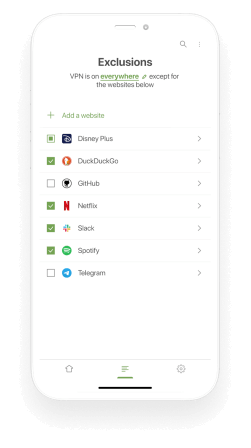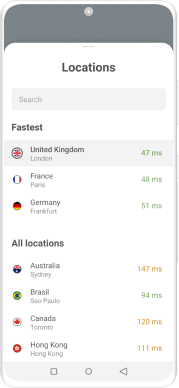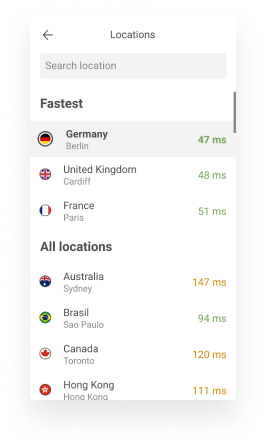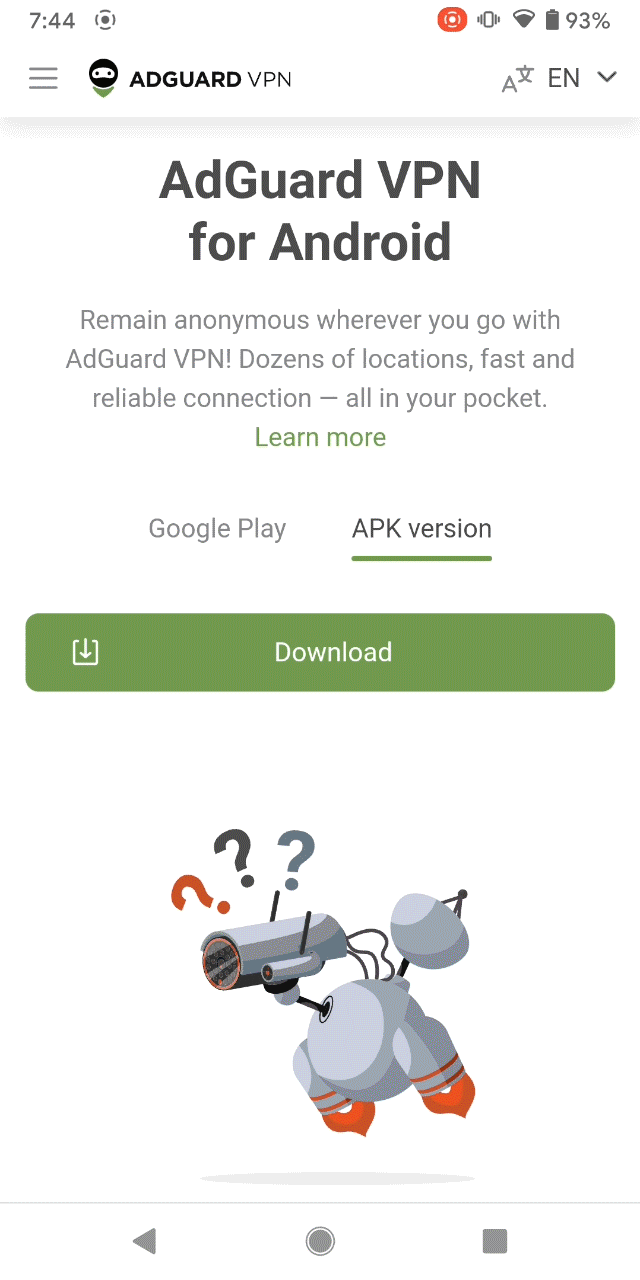What a digital footprint is and how it relates to your online privacy
Each time you go online, you leave behind a trail of data. These digital footprints have their benefits and costs. With saved browsing history, you can easily find the website you visited several days ago. Website cookies make your online experiences more personal and convenient. But with every digital footprint, you lose some degree of privacy. In the article, we discuss how your online privacy is related to your digital footprints and how to keep your personal information safe, especially while using vulnerable public networks.
Understanding what a digital footprint is
Digital footprints are the record of all your online activities. The more you leave them, the more information you reveal about your personality, habits and interests, etc. Your digital footprint begins at the moment data leaves your network and gets to the Internet. On the way, personal data pass through someone’s server, where they can be tracked, stored, and sold to different companies.
The websites are the next place where you leave digital footprints. Websites use tracking systems to gather information for personalisation, analytics, advertising, and other commercial purposes. This process isn’t transparent. Even if users suppose that they might be tracked, they don’t know in detail what kind of personal data websites get, how they use it, and who has access to all this data. But that's not the only issue. There are two different types of tracking systems:
- The first-party tracking system means that the site you visited tracks you. The server of the website sets on your browser cookies to identify you, remember your login details, track your activity, etc. This kind of cookies and information associated with them are not normally shared between websites, and thus are harmless. Even if an owner of the site knows something about you, this information can’t be used to build your digital profile as a whole.
- Third-party or tracking cookies are placed to your browser by third party servers not directly related to the website you visit. It can be ad servers, social auth servers, web trackers, etc. Tracking pixels or js code belonging to these ‘third-parties’ are placed on lots of websites allowing them to collect versatile pieces of information about every web user from different sources, put them together like a puzzle, form your digital profile and monetize it. Using an ad blocker helps protect you from third-party cookies.
Furthermore, not only companies practice different methods to collect digital footprints. Users leave a lot of personal information consciously by using social networks.
Difference between active and passive footprints
Depending on how users leave their data, digital footprints can be divided into two main categories:
- An active digital footprint is created when users submit information intentionally. This often occurs on social media platforms, dating and networking websites, online shops and forums, etc. Another example of an active footprint is filling out an online form to submit for newsletter subscriptions or text updates.
- Leaving a passive digital footprint is an entirely different hidden process. As a rule, users don't even imagine that it takes place. For example, the website’s analytical system tracks the duration of your visit, your IP address, or the web pages you viewed.
At first sight, a passive digital footprint contains tiny pieces of data. How can the information about the music you listen to or your time zone compromise you? On their own, they can’t do much. But if data from places you wouldn’t expect come together it can form a perfectly accurate portrait of who you are. Your active digital footprint creates your online reputation, which might seriously affect your offline life.
Digital footprint examples
Digital footprints have huge commercial value and a lot of companies are interested in buying them. That’s why websites, web services, various platforms, and applications use tracking systems and surveillance software that gather data about users. Let’s review some more evident digital footprint examples:
- Online purchases. Shopping on the Internet is popular and convenient. But to buy online you have to give the online shops a lot of confidential information: your name and phone number, your physical and email address, payment card details. But that's not all. Tracking systems monitor how often you visit the website, at what time, what you are looking for, your final purchases, saved items, written reviews, and more.
- Activity on social media and dating websites. Users leave an enormous amount of digital footprints on social networking sites by posting photos and videos, using hashtags and geolocation, adding friends, writing comments, following special content, etc.
- Submitting newsletter subscriptions. To receive newsletters, you have to fill in an online form and share your email address.
- Search history. Search engines monitor your requests and store them, to make search results more relevant, provide better search suggestions and (surprise!) show you the ads benefiting them most.
- Logging in to websites via Facebook or Google account. This is a very easy way to log in, but if you use it you grant Facebook or Google permission to monitor and collect your online activity data. By the way, even if you don’t – Facebook will anyway do that, without asking your opinion (you can read more about Facebook and their shadow profiles).
Why does your digital footprint matter?
Digital footprints matter for the following reasons:
-
Online reputation
Your online reputation is formed by your active digital footprint which can seriously affect your offline life. Before hiring, employers search for information about candidates. Colleges and universities look you up online too. -
Lack of control
Other users can misinterpret or use your words, photos, or videos for their own purposes. Also, you can’t predict how companies, data brokers, advertisers might use information about your digital footprints. -
Unobvious lack of privacy
Private conversations with your friends via social media are more public than you might think. Spreading information to a broader circle might destroy relationships with friends. -
Fake online identities
Hackers can use your digital footprint to create your fake profile and gain access to your network, scam your friends out of money, seek out online relationships, and even spread malware. -
Permanent storage
Digital footprints might be kept for a long time and you can’t guess how they can affect you in the future. -
Unpredicted data leaks
It has become almost a norm that private data regularly gets leaked from social networks, dating sites, food delivery services, online shops and so on. Your IP and physical addresses, phone numbers, online purchases, medical data, private photos and chat logs — one or another day this all may become public without your consent.
How can you minimize your digital footprint?
Third-party companies, data brokers, and marketers are interested in getting as much user data as possible. Also, anyone who searches your online identity can find out a lot about you from your digital footprints. To stay safe you should keep an eye on the data you leave on the Internet. There are several ways you can protect your personal data and minimize the size of your digital footprints.
-
Check privacy settings on social media websites
You can change the default setting on the social media sites to your preference, for example, limit access to your account, choose who can contact or find you, etc. It’s good practice to review privacy settings regularly because social media change them from time to time. -
Create strong passwords
You should think about a password as the first line of your digital protection. Users tend to create passwords that will be easy to remember in the future, for example, passwords with consecutive combinations, names, or date of birth. And as a result, they get weak passwords that are easy to crack. Strong passwords should be long, complex, and contain symbols, numbers, and upper- and lowercase letters. Using a reliable password manager helps you to remember them always and keep them securely. It’s also important to enable 2 factor authentication on all websites storing your sensitive information. -
Use an ad blocker
Advertisers are interested in making profit by showing you relevant ads. Ad servers send tracking cookies to your browser to monitor your activity, get information about your interests, and build your digital profile. With AdGuard Ad Blocker you can protect your online activity not only from tracking but also from phishing and malware attacks. AdGuard is available as a desktop app for Mac and Windows, mobile app for iOS and Android, and as an extension for all popular browsers. -
Remember that someday anything you do on the Internet may become public
Stolen access to mailbox, lost phone or laptop, another data leak or infecting with password-stealing malware — all this may make your private data public. So it might not be so paranoid to act on the Internet like if you act publicly. -
Unsubscribe from mailing lists you don’t read
While browsing the Internet, it’s easy to submit newsletter subscriptions with just one click. And over time you might discover a lot of never opened letters, which not only clutter your email box but also put your privacy at risk. Unsubscribing allows you to delete your email address from the website's database. But be careful with suspicious emails and simply delete them because one click on the “Unsubscribe” link might be potentially dangerous. -
Delete your old accounts
Deleting old accounts is an effective method to reduce your digital footprints and protect yourself from potential data breaches. Deactivating old accounts is not the same. In this case the service provider continues to keep your data. -
Monitor your medical records
Health information is one of the favorite hacker targets. Cybercriminals might interlace your medical records with their health information to get treatment in your name. To prevent identity theft, practice good data hygiene by regularly reviewing your medical records. -
Don’t use a Facebook account to log in to third-party websites
Logging in with Facebook is convenient, but it might seriously compromise your privacy. You allow another company to use your Facebook user data (your email linked to Facebook, for instance) every time you do it. You can manage the private information that each app has access to, as well as terminate access for apps by removing all connections of your Facebook account to the apps.
To see all the apps and websites linked to your Facebook account and remove unnecessary ones:
- Go to your Facebook account’s Settings & Privacy and click Settings.
- Click Apps and Websites.
- Click Remove next to apps and/or websites you want to disconnect from your Facebook account.
-
Update your software regularly
Hackers can gain access to devices and your personal information by exploiting vulnerabilities in outdated software. The best way to prevent this is to keep your software up-to-date. -
Use a VPN
Virtual Private Network protects all your data with high-level secure encrypting. VPN hides your IP address by replacing it with the IP address of a VPN server you choose and makes it hard to find your current physical location. Using a VPN increases your privacy and significantly reduces the digital footprint you leave online. VPN is essential if you connect to public Wi-Fi networks notorious for their vulnerability.
Why AdGuard VPN
VPN is an effective tool to decrease digital footprints, secure your personal data, and browse anonymously. AdGuard VPN provides strong privacy protection and stands out with the next useful features:
- Unique in-house developed VPN protocol, which provides strong encryption and maintains high internet connection speed.
- Exclusions lists for more convenient browsing. AdGuard VPN has two modes of operation. In the first mode enabled by default VPN will be active for all websites and apps except the ones you add to the list of exclusions. In the second mode, VPN will be active only for websites and apps you add to the list.
- The opportunity to choose a DNS server. You can choose any DNS server from well-known providers and use it instead of the one assigned by your ISP.
- VPN servers located in 40+ countries.
- Choosing a VPN server with the fastest connection. AdGuard VPN shows ping times to servers in different locations. Knowing it you can choose a faster VPN server.
- AdGuard VPN can be used with AdGuard Ad Blocker at the same time. These tools are compatible, and you can use them both to get maximum privacy, anonymity and security.
- Kill Switch. If your device loses a VPN connection, Kill Switch automatically disconnects your Internet connection and prevents potential data leak.
- Auto-protection. This function allows VPN to automatically turn on when your device connects to vulnerable Wi-Fi networks.
- Transparent logging policy. AdGuard VPN takes care of the safety of customers and logs the minimum data which is required for a fully functional service.
- Premium AdGuard VPN users can simultaneously connect five devices to the VPN.
FAQ
What is a digital footprint?
A digital footprint is a trail of data you leave behind while browsing the Internet. You can leave them consciously by posting texts, photos and videos on social media platforms. However, a big amount of digital footprint is gathered without your knowing.
What are three examples of a digital footprint?
More visible digital footprints are posting photos and videos, leaving comments and reviews on the Internet. That’s why this is a good idea to avoid oversharing on social media which is the number one place where you actively leave digital footprints.
How can I erase my digital footprint?
You can’t delete all your digital footprint, but it’s possible to significantly minimize it. There are some ways: delete your old accounts, unsubscribe from mailing lists, check privacy settings on social media and your browser, avoid oversharing and think twice before revealing information about yourself online.
How does digital footprint appear?
Big amount of digital footprints you leave consciously by posting something on social media, forums, and blogs. Furthermore, websites, search engines, services, and applications gather different kinds of information about you.
How can I review my digital footprint?
It might be hard to review all your digital footprints, but you can find plenty of information if you go to search engines and specific sites that gather data about people. Next review your Google account settings, where you can find your activity history. Facebook has the same option.
Is it possible to erase digital footprints?
Digital footprints will remain online forever. That’s why it’s extremely important to do your best to protect your privacy and minimize the digital footprints you leave online.
How can your digital footprint affect you?
Online reputation, based on your active digital footprints, can seriously affect your offline life and even damage relationships. Advertisers and marketers can chase you along the Internet trying to sell you their products and services.
What are the benefits and costs of having a digital footprint?
Digital footprints make your browsing more personalized and convenient. But with every digital footprint, you lose some degree of privacy.






















